Decaffeinated tea must go through a process to remove the caffeine from the leaves. All tea from Camellia sinensis contains caffeine.

Tea Chemistry
Tea is a rich source of antioxidants, but it also contains high levels of caffeine, which may cause adverse effects in some people. Hence the demand for decaffeinated tea.
You may be wondering exactly how caffeine is removed from tea? And is it safe?
First, a little tea chemistry will help you understand what's going on in your tea leaf.
The caffeine in tea is different from coffee because of how it bonds. Caffeine in tea combines with tannins, decreasing and stabilizing caffeine's effects. The tannins prevent the caffeine from being released too rapidly, absorbing it over a more extended period.
Caffeine acts as a central nervous system stimulant and has a direct effect on the cardiovascular system stimulating the heart rate.

Shades of Earl Grey - $19.95
from: Firebelly Teas Inc.
"Caffeine is the world's most popular drug."
However, the caffeine in tea is naturally balanced by the l-theanine in tea. The unique combination sharpens the mind, increases concentration, eliminates fatigue, and enhances intellectual acuity.

Caffeine is a methylxanthine. Theobromine and theophylline are the other methylxanthines found in tea. The tea plant creates these chemicals to protect itself from insects and other animals.
Methylxanthines make up 2% to 5% of the dry weight of the fresh tea leaves. Methylxanthines contribute to the bitter taste in the tea infusion. The amount of methylxanthines in tea depends on the variety and cultivar of Camellia sinensis, the age of the leaves, the climate, and the propagation method.
How Much Caffeine Is In Tea?
Dry Leaf Caffeine Content:
Caffeine accounts for 14 -28 mg/g of the tea leaf in fresh tea leaves. The levels of caffeine vary depending on the tea plant variety or the tea leaf harvested. Fresh tea leaves from growing shoots contain higher amounts of caffeine than older leaves.
Brewed Leaf Caffeine Content:
A brewed cup of tea may have anywhere from 15 -75 mg of caffeine per 8-ounce cup. The level of caffeine in brewed tea varies depending on the amount of tea used, the type of tea, the volume of boiled water, the brewing temperature, and the brewing time.
Related:
- How L-Theanine Can Make You Calm And Happy
- 20 Best Kept Tea Secrets of All Time
- How To Drink Green Tea Every Day For The Most Benefits
- Sencha and Hojicha: Two of The Best Everyday Japanese Teas
What Is Decaffeinated Tea?
All teas made from Camellia sinensis contain caffeine. Even decaffeinated tea retains a small portion of caffeine.
Numerous decaffeination methods have been developed to remove caffeine from tea derived from the Camellia sinensis plant.
Decaffeinated teas have had the caffeine removed. Historically, the tea industry used three main methods to remove caffeine from tea leaves. Tea makers chose either the Carbon Dioxide, Ethyl Acetate, or Methylene Chloride method.
Caffeine-free herbal tea blends made with natural ingredients never contain caffeine. Many tisanes or herbal teas and blends are naturally caffeine-free. Therefore, they do not go through a decaffeination process.
How Is Tea Decaffeinated?
Caffeine efficiently extracts using boiling water or water organic solvent mixtures. The extraction of caffeine in tea is low when using cold water.
Decaffeination is a process where a solvent removes the caffeine from tea leaves. A solvent is mixed with oxidized tea leaves to decaffeinate tea leaves. After several hours, the solvent and the dissolved caffeine are removed, and the leaves are dried.
Methylene Chloride used to be the solvent of choice, but health concerns resulted in its use being banned in the United States.
Today, two methods are most common:
- Ethyl Acetate
- Supercritical Fluid Extraction with Carbon Dioxide (SFE-CO2). (Sometimes abbreviated as Supercritical Carbon Dioxide (CO2) extraction).
Ethyl Acetate was the first solvent used. It is not very effective in removing caffeine, and it also removes some of the flavor-providing compounds within the leaves.
Supercritical Carbon Dioxide is a better choice; it can remove caffeine without affecting any other compounds within the leaves.
Look for decaffeinated decaf teas using the Supercritical Carbon Dioxide process, which retains the most flavor and antioxidants.
How exactly do these processes remove the caffeine to create decaf tea?
Researchers at the University of Newcastle, Australia explain the actions of Ethyl Acetate, Carbon Dioxide, and Water to create decaf tea.
Decaffeination Using Ethyl Acetate
Organic solvent decaffeination is generally done by first softening the tea leaves in water and then mixing in the organic solvent of choice. Caffeine is about ten times more soluble in organic solvents than in water at room temperature.
Most of the caffeine is extracted from the leaves, but the other significant tea components, the catechins, and theanine, remain in the leaves.
Ethyl Acetate is a standard solvent to extract caffeine and polyphenols from teas. Ethyl acetate is found in many fruits, such as apples, peaches, and pears, and is completely digestible. It has been used in various foods such as salad dressings and fruit desserts and has been approved for decaffeination by the US FDA since 1982.
Ethyl Acetate is the solvent of choice compared to the other organic solvents used to prepare decaffeinated tea products.
Decaffeination Using Carbon Dioxide
Due to the increase in consumer concerns toward chemical residues in decaffeinated products, Supercritical Fluid Extraction with Carbon Dioxide (SFE-CO2) is used as a selective and viable method for removing caffeine from teas.
Kurt Zosel discovered the Carbon Dioxide decaffeination method in the early 1970s. The decaffeination of tea using SFE-CO2 is done by soaking the tea leaves in a co-solvent to enhance the extraction of the caffeine.
Liquid carbon dioxide is pumped in at a designated pressure. The liquid carbon dioxide is then heated and pumped into the extraction vessel to extract the caffeine from the tea leaves.
The caffeine, dissolved in the supercritical carbon dioxide, is separated from the carbon dioxide and collected by reducing pressure. Since flavor molecules are larger than caffeine molecules, they remain intact, so tea's flavor remains the same.
The outcomes of the decaffeination process using SFE-CO2 vary depending on the tea particle size, the co-solvent utilized to soak the tea in, and the temperature, pressure, and flow rate of the CO2.
The main limitation of the SFE-CO2 decaffeination method is the high costs. However, this is outweighed by several advantages. It is a fast process with no toxic residues, less degradation of the tea catechins, and high retention of the tea flavors.
Decaffeination Using Water
Water is a safe and environment-friendly solvent, and it is relatively inexpensive and accessible compared to organic solvents.
Therefore, it is usually considered a solvent of choice for any separation or isolation process.
Water was initially used for the decaffeination of coffee in 1938. Since then, two types of water extraction methods have been developed to decaffeinate coffee beans:
- The Swiss Water decaffeination techniques.
- French Water decaffeination techniques.
The advantage of the Swiss Water process is that it produces decaffeinated coffee beans with a richer flavor. In contrast, the benefit of the French Water process is that it results in decaffeinated coffee beans with higher solids and less moisture.
The advantage can be potentially applied to water decaffeination of tea to minimize the loss of flavor.
Water Decaffeination Process
Water decaffeination is done by first blanching freshly harvested tea leaves in boiling water for a short time. As the water solubility of caffeine is higher than the solubility of the tea catechins, most of the caffeine can quickly be extracted into the boiling water. In contrast, the catechins mostly remain behind in the tea leaves.
The leaves are quickly removed from the boiling water containing the caffeine and dried to obtain decaf tea.
The water decaffeination process is influenced by:
- water temperature
- length of blanching time
- the ratio of water to tea
- the type of fresh tea leaves used
The water decaffeination process is inexpensive and is without the risk of organic solvent residues being left behind in the decaffeinated product.
However, this method may cause the loss of flavor and theanine a valuable amino acid unique to tea in the plant world. And who wants tea without theanine?
Decaffeinating Tea At Home
A once-popular solution to removing caffeine at home was to rinse your tea first. Perhaps the idea came from the water decaffeination process. However, rinsing doesn't remove as much caffeine as people thought.
Bruce Richardson of Elmwood Fine Teas, author of many tea books, helped sponsor a university study that measured caffeine content in eight classic loose teas. The researchers found that a three-minute infusion removes only 46-70% of the caffeine from a cup of tea.
In fact, the studies at Asbury University showed it would take a six-minute soak to remove 80% of the caffeine. Discarding the first infusion remains a viable way to reduce caffeine intake, just know it's not 100% decaf tea.
Teas with The Most and Least Caffeine Levels
Biochemical analysis of 35 teas is presented in the book Tea: History, Terroir, Varieties by Kevin Gascoyne et al.
Table 1 lists the concentration of caffeine in various tea infusions. The authors, and owners of The Camellia Sinensis Tea House, tested the caffeine levels by preparing the teas as you would at home.

Not surprisingly, matcha topped the list for the highest caffeine levels. Matcha is a ground powder from the whole tea leaf. You consume the entire leaf, not an infusion of the tea leaf.
Interesting to note from this table is that some green and oolong teas have higher or equal caffeine content than black teas.
Here are some of the highlights of the study:
- All teas were infused in a teapot with 2 cups (500 ml) water.
- Matcha had a concentration of 126 mg of caffeine.
- Mucha Ti Guan Yin had 12 mg of caffeine.
- First Flush Darjeeling had 58 mg of caffeine.
- Longer infusions and higher water temperatures release more caffeine.
The authors also found that a 10-minute infusion extracts 70% of the caffeine from the leaf. This is fairly consistent with the study done at Asbury University with Bruce Richardson.
Teas Naturally Low In Caffeine
All herbal teas (tisanes), except for yerba mate, are caffeine-free.
Kukicha or Twig Tea
Kukicha is a Japanese tea made from the stems of sencha, kabusecha, or gyokuro. Kukicha may also be called bocha or stick tea. Because only the stems are used, this tea is naturally low in caffeine. When the stems are from gyokuro production, kukicha is often called karigane.
Hojicha
Hojicha is roasted bancha or sencha and kukicha twig for a savory nutty flavor. One of the things you will notice with hojicha is its roasty aroma. Hojicha brews a caramel amber color and has a sweet biscuity and nutty flavor. Even though it's low in caffeine, the flavor is robust.
Decaffeinated Tea
Most reputable tea companies will tell you the methods used to decaffeinate their tea.
Adagio Tea and Harney & Sons are two retailers I highly recommend for their excellent decaffeinated teas.
- Adagio Tea online sells loose-leaf decaf, or decaffeinated teas sourced directly from the artisan farmers who tender them. Decaf varieties include Earl Grey, Ceylon, and other decaffeinated teas.
- Adagio decaf teas are decaffeinated using the Carbon Dioxide (CO2) process, which retains the most flavor and antioxidants.
- Harney & Sons sells loose decaffeinated tea procured from a German company to remove the caffeine from whole leaf Ceylon tea using the Carbon Dioxide (CO2) decaffeination process.
- Harney & Sons broken leaf Ceylon teabag tea removes the caffeine using the Ethyl Acetate method.
Resources:
Caffeine Content of Brewed Teas PubMed October 2008
Caffeine in Green Tea: Its Removal and Isolation Research Gate April 2014
Tea: A User's Guide by Tony Gebely November 2016
Tea: History, Terroirs, Varieties by Kevin Gascoyne December 2018
The Latest Buz on Tea and Caffeine by Bruce Richardson January 2015
Tea for Beginners Start Here >>



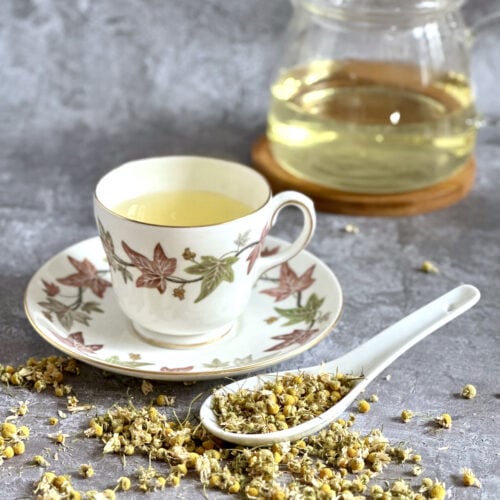
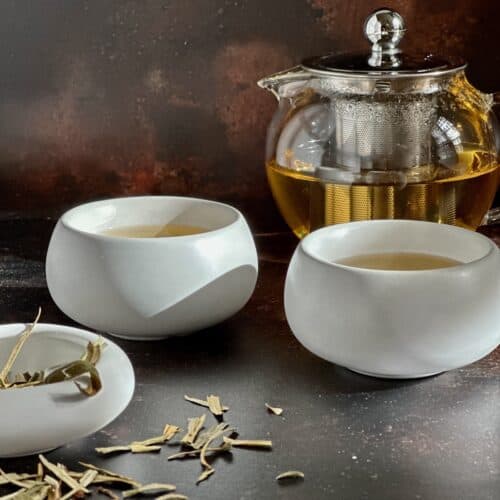
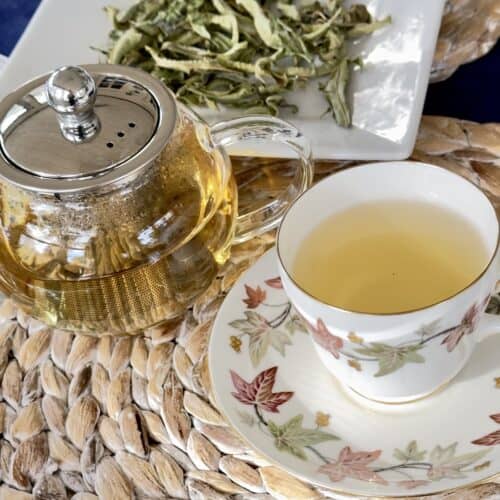
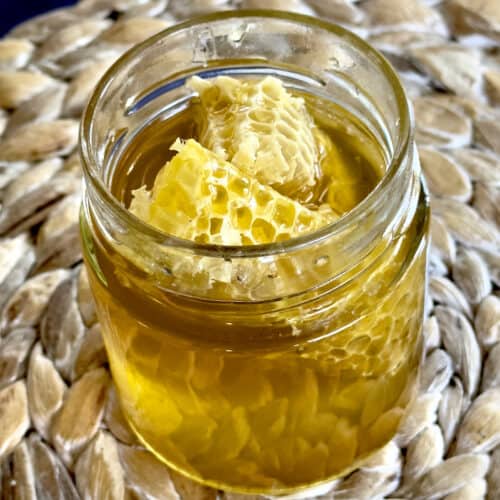
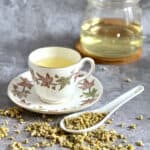
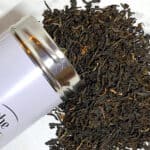
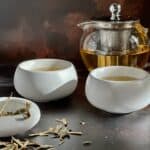
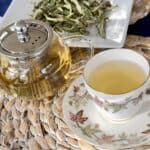


Leave a Comment